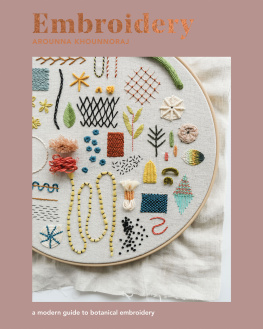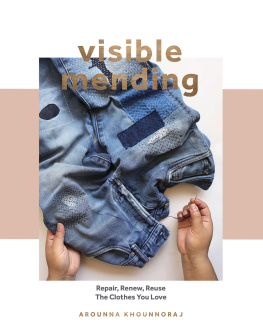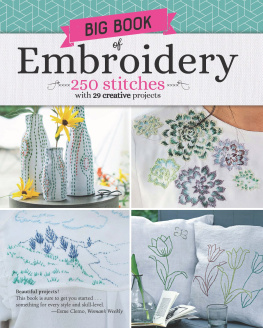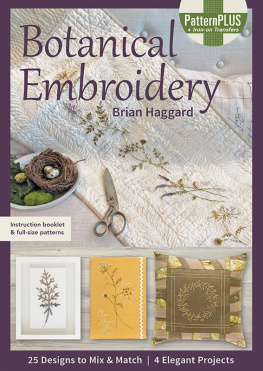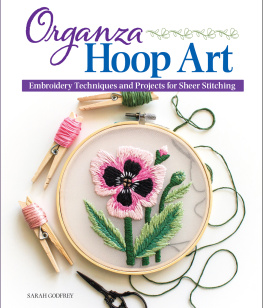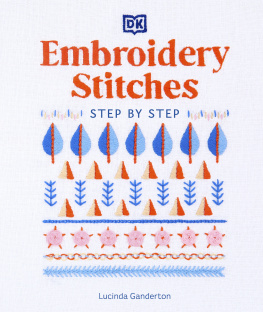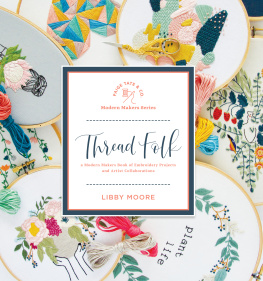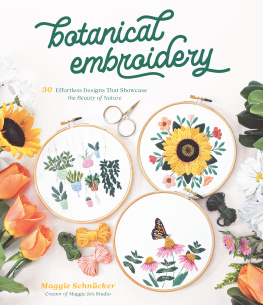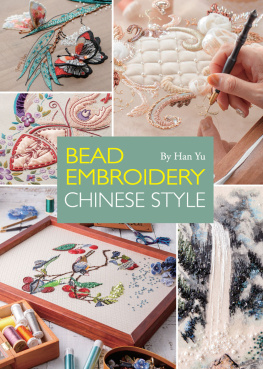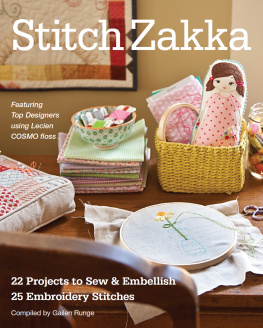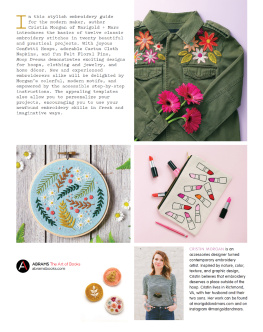




There was a time when many young people practised the art of embroidery by making samplers and other projects as part of their life skills training. But, in hindsight, these were much more than just training exercises to develop design skills or hand/eye coordination; they were ways to pass on from generation to generation the traditions and expressions that define who we are. Embroidery has been a part of every culture from prehistory to the present day. And while its roots may have been utilitarian patching, mending and reinforcing it grew and evolved to encompass design elements, techniques and stitchwork that reflect ever more decorative and expressive possibilities. In fact today embroidery defines such a large category of needlework that it is hard to know where it begins or ends. But, simply put, it is the art of decorating fabric using needle and thread, embellishing a surface with a myriad of stitches to build, from line alone, a wealth of pattern, image, colour and texture.
I, too, learned embroidery when I was young, although perhaps not in such a rigorous way as previous generations. Upon arrival in Canada my mother trained as a seamstress and, as a young immigrant family, sewing, making and mending were always a part of our household. So, along with general sewing skills, I took it all in and it remained with me all the way through art schools, residencies as a fibre artist and into my studio. In a lifetime of working with textiles, embroidery was always one of my favourite techniques; it was my way of drawing on fabric using only thread, building patterns or creating images expressed in colour, line and shape. It was a way of adding layers and detail to whatever it was that I was making, whether paper goods, production bags or large artistic pieces even sculpture.
But I think that its not enough to view embroidery as just an element of work. For me it has proven to be a core activity, but one that embodies much more. It has become a way to unify all my artistic practices precisely because its techniques, applications and materiality directly relate to so many other activities mending, fashion work, punch needle and quilting to name only a few. So, no matter where my work took me, no matter how diverse my interests, embroidery was somehow always present. And like many of those activities, embroidery inherently expresses the very idea of handwork: compositions that reflect my thought process, sitting and working on a piece of cloth, applying designs stitch by stitch, line by line, back and forth in colourful and textured additions. It is a quiet process, meditative, thinking with my hands with the simplest of tools at my fingertips.
History shows that most embroidery exists somewhere between the more structured counted threads technique, where patterns and repetitions are based on the weave of the base cloth, and a more freestyle technique, where embroidery work is limited only by how you want to express your design. My approach to embroidery is similar to the way I draw and, I think, is consistent with a more modern approach. I enjoy the freedom of drawing designs any way I like and letting the stitchwork express itself in any combination. And, as someone who loves to keep busy, embroidery is something I always keep with me wherever I am. I often have my well-worn sewing kit with me, stuffed with threads, needles and cloth, so I can continue working for a few moments while sitting in a park or travelling. Small patterns, insects or miniature gardens anything that I might see or imagine can be created on the go.

Embroidery is something that I can combine with any number of studio activities. Much of my work has focused on handmade objects of a utilitarian nature such as purses, personal accessories and home goods. I love useful things. But thats not to say that I dont appreciate more artistic pursuits and projects that have no other purpose than to illustrate the beauty of a technique or material. And Ive found that embroidery perfectly embraces these two ideas, always suitable as a complement to any sewing project I might be working on, but also completely able to stand on its own, expressing its beauty in and of itself.
My intention in this book is to guide you through embroidery techniques that will be useful for anything that you may be inspired to do, as well as through specific projects from my studio that I hope you will find inspiring. As such, Ive organized the book into two main sections stitches and projects with both sections working in conjunction with each other to focus on both the details of individual stitches and on projects that highlight each stitch, individually and in different combinations. In both sections Ive included descriptions and thoughts on how Ive used different stitches, as well as step-by-step drawings and illustrations for you to follow along and refer to. So, as you work through a project, you will also be referred to the for specific instructions on how to work the stitches used in the project.
One of the difficulties in describing embroidery is the sheer number of techniques that have been handed down to us from different times and different places. Add to that the neverending combinations and variations and the list becomes quite long and complex. So, rather than create a compendium of stitch techniques, Ive focused on many of my favourites, the stitches that I use regularly and that have a range of qualities and characteristics for any type of work that you might do some simple, some more complex. Although Im a big believer in working intuitively and using your own creative freedom, Ive organized the stitches into generally accepted groups based on how different stitches are typically used: those best suited for linear elements; borders; filler stitches; and those that are more free-style and ornamental. Similarly, Ive organized the projects into three different groups: projects for the home, useful and decorative items for your life; wearable items such as clothing and accessories; and art pieces that combine embroidery with different media. There are projects at different skill levels, so there will be something for everyone.
On the following pages Ive included descriptions of all the different tools and materials that you might need, as well as all the necessary steps to start your projects from choosing your materials, designing and transferring your image, selecting colours and threads and stretching and working with your hoop. You can download the project templates at bookhou.com/pages/embroidery-patterns , if you dont feel comfortable drawing them freehand. At the end of the book, you will also find a resource guide to help you locate some of the suppliers of equipment tools and embroidery threads.


Embroidery has been around for centuries, and its one constant is the fundamental relationship between a fabric base, a thread and a needle. That relationship might sound simple, but it gets a little more complex because, whatever you do, tools matter. And for every job there is a tool. Different threads need different needles, as do different fabrics. Along with all the creative possibilities within embroidery there are many tools and materials as well, both commonplace and specialized. Each is purposed to work in a specific way to achieve specific results. So it can sometimes be confusing, especially when there is more than one choice for any project. However, the items that you will need can be reduced to a well-chosen few.
Next page
